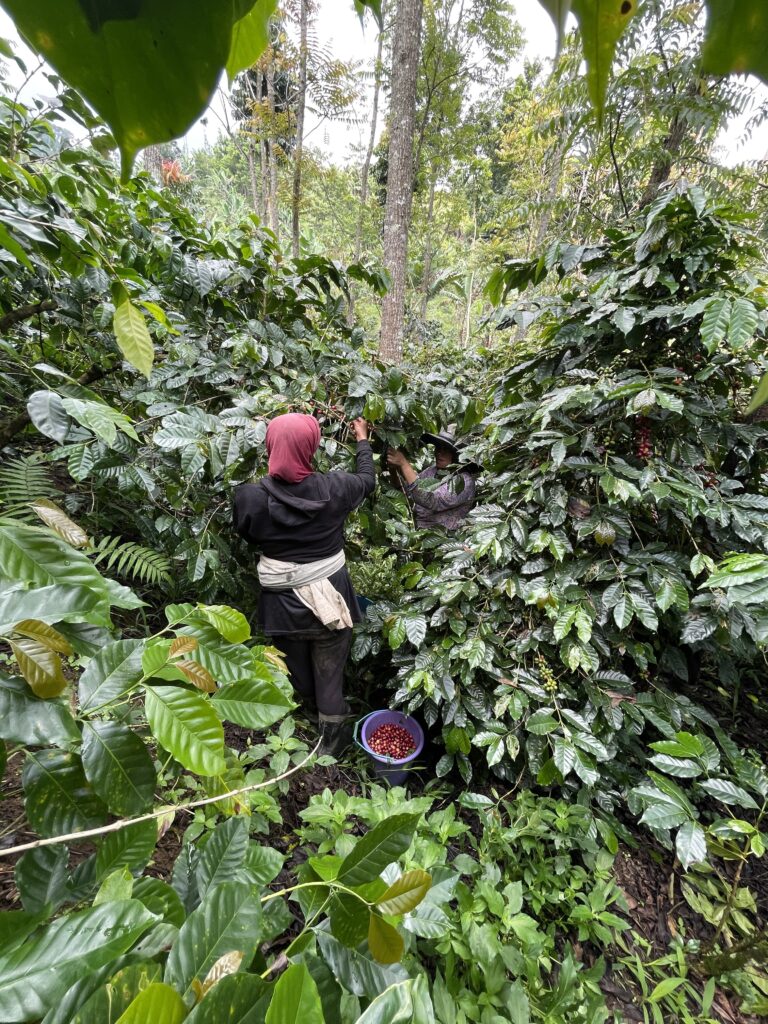FARMING
The coffee tree seedling process, coffee tree planting, and intercropping with horticultural plants, along with garden maintenance, are carried out to produce high-quality raw coffee cherries and other harvests besides coffee, such as fruits, vegetables, spices, and even timber.
Planting
Coffee plants come in several species, including Arabica, Robusta, Liberica, and Excelsa. The most commercially common species worldwide are Arabica and Robusta coffee. Arabica and Robusta are the most widely grown coffee species, including at the Kopi Tujuhenam plantation, which is fully planted with Arabica species.
Arabica (Coffea Arabica)
This coffee species was discovered around 850 AD in the tropical forests of Africa (Ethiopia). Arabica coffee thrives at altitudes of 800 to 2000 meters above sea level. Nearly 60% of the world’s total coffee production comes from the Arabica species. Approximately 20,000+ coffee trees planted at the Kopi Tujuhenam plantation in Sindangpalay Village, Karangpawitan (1100-1200 meters above sea level) are all Arabica species.
Robusta (Coffea Canephora)
This coffee species was first discovered and cultivated in 1870 in the tropical forests of Africa (Congo). Robusta coffee is widespread and grows well at different altitudes, from lowlands of 500-1500 meters above sea level. Commercially, almost 40% of the world’s total coffee production comes from the Robusta species. Other species of coffee not as significant commercially include Liberica (Coffea Liberica) and Excelsa (Coffea Liberica var. Dewevrei).


Harvesting
One of the common coffee harvesting methods practiced by coffee farmers is manual hand-picking, allowing for selective harvesting by picking only the ripe coffee cherries. This manual picking method is applied at Kopi Tujuhenam’s plantation.
Additionally, there is a mechanical harvesting method using machines, typically used on flatter plantation land, as seen in countries like Brazil.
